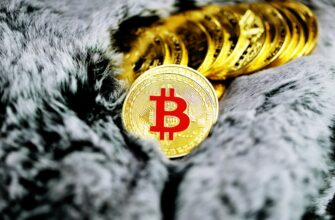Peer-to-peer (P2P) trading has revolutionized how people buy and sell cryptocurrencies like Tether (USDT). Unlike traditional exchanges, P2P platforms connect buyers and sellers directly, allowing them to negotiate rates and payment methods. This article explores the concept of P2P rates for USDT, factors influencing these rates, and strategies to secure the best deals. Whether you’re a seasoned trader or new to crypto, this guide will help you navigate the P2P landscape confidently.
## What Is a P2P Rate for USDT?
A P2P rate for USDT refers to the price at which traders buy or sell Tether (USDT) directly with one another on P2P platforms. Unlike centralized exchanges, where prices are determined by order books, P2P rates are set by individual sellers or negotiated between parties. USDT, a stablecoin pegged 1:1 to the U.S. dollar, is widely used in P2P trading due to its price stability and liquidity.
## Key Factors Influencing P2P Rates for USDT
Several factors affect the P2P rates for USDT, creating variations across platforms and regions:
1. **Supply and Demand**: High demand for USDT in a region can drive up rates, while excess supply may lower them.
2. **Market Volatility**: During crypto market fluctuations, traders may adjust USDT rates to hedge against risks.
3. **Payment Method**: Rates often vary based on payment options (e.g., bank transfers, cash, or digital wallets).
4. **Platform Fees**: Some P2P marketplaces charge fees, which sellers may incorporate into their rates.
5. **Geographical Differences**: Local regulations, currency stability, and economic conditions impact regional rates.
## How to Find the Best P2P Rates for USDT
Follow these steps to secure competitive rates:
1. **Compare Multiple Platforms**: Check rates on popular platforms like Binance P2P, Paxful, and LocalBitcoins.
2. **Analyze Market Trends**: Use tools like CoinMarketCap or TradingView to monitor USDT price movements.
3. **Negotiate with Sellers**: Some platforms allow buyers to propose custom rates to sellers.
4. **Choose Low-Fee Platforms**: Opt for platforms with minimal transaction fees to maximize savings.
5. **Verify Seller Reputation**: Prioritize traders with high ratings and completed transactions to avoid scams.
## Risks and Safety Tips for P2P USDT Trading
While P2P trading offers flexibility, it also carries risks:
– **Scams**: Avoid deals that seem too good to be true.
– **Payment Fraud**: Use escrow services and confirm receipts before releasing USDT.
– **Regulatory Compliance**: Ensure your transactions comply with local laws.
## FAQ Section
### 1. Why Do P2P Rates for USDT Vary Across Platforms?
Rates differ due to factors like platform fees, regional demand, and payment method availability. Always compare rates before trading.
### 2. Is P2P Trading Safe for USDT Transactions?
Yes, if you use reputable platforms with escrow services and verify counterparties’ credibility.
### 3. Can I Negotiate P2P Rates for USDT?
Many platforms allow negotiation. Polite communication can help you secure better deals.
### 4. Are P2P Rates Better Than Exchange Rates?
P2P rates can be more competitive, especially in regions with limited banking access, but always compare both options.
### 5. Do I Pay Taxes on P2P USDT Trades?
Tax regulations vary by country. Consult a tax professional to ensure compliance.
## Conclusion
Understanding P2P rates for USDT empowers traders to make informed decisions. By comparing platforms, analyzing market trends, and prioritizing safety, you can optimize your trading experience. Stay updated on market shifts and regulatory changes to navigate the dynamic world of P2P crypto trading successfully.








